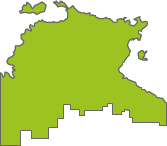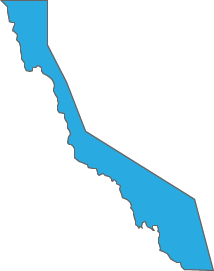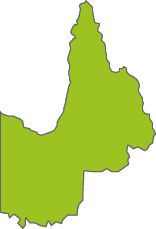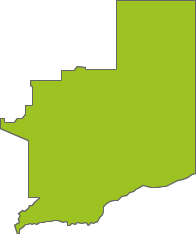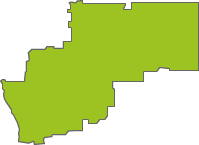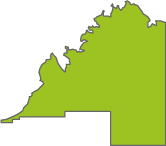Top species richness
Announcements
Hi everyone,We're very pleased to welcome Katarina Christenson to our team as NatureMapr Test Lead.Katarina has been giving Lewis and our group of volunteer mobile app testers a huge hand with testing...
Continue reading
NatureMapr feed to DCCEEW Biodiversity Data Repository now live
NatureMapr Data Management and Privacy Policy update
Events
Photographic Competition Exhibition at the CSIRO Discover CentreTwenty-three framed photographs of the competition winners and finalists will be on display at the CSIRO Discover Centre from 22 May 202...
Continue reading
Discussion
Coprinellus etc.
Vinca major
Aeolothapsa malacella
Aeolothapsa malacella
Significant sightings
- Asparagus asparagoides at Greenway, ACT
- Charopidae sp. (family)
- Fletchamia sp. at Walpole-Nornalup National Park
- Fletchamia quinquelineata at Coolatai, NSW
- Onychophora sp. (phylum) at Coolatai, NSW
- Eucalyptus bridgesiana at Kowen, ACT
- Oxypetalum coeruleum at Oakey Hill
- Eucalyptus fastigata at Namadgi National Park
- Percassa rugifrons at Kosciuszko National Park
- Pomaderris pallida at Bullen Range
Latest identifications
Laccaria sp. at Banksia Street Wetland Corridor
Coprinellus etc. at Banksia Street Wetland Corridor
Sanguinoderma rude at Currowan, NSW
Sanguinoderma rude at Currowan, NSW
Nassella neesiana at Hackett, ACT
Nassella neesiana at Hackett, ACT
Nassella neesiana at Hackett, ACT
Nassella neesiana at Hackett, ACT
Nassella neesiana at Hackett, ACT
Nassella neesiana at Hackett, ACT
Top contributors
- AlisonMilton 12.4K
- trevorpreston 12.2K
- michaelb 10.2K
- Tapirlord 9.5K
- RodDeb 9.2K
- Mike 8.4K
- KylieWaldon 6.2K
- kasiaaus 6.1K
- jb2602 6K
- MatthewFrawley 5.5K
Top moderators
- MichaelMulvaney 42.7K
- Tapirlord 22.2K
- natureguy 15.1K
- donhe 12.6K
- Liam.m 11.7K
- michaelb 11.6K
- ibaird 10.8K
- KimPullen 7.9K
- MatthewFrawley 5.8K
- AlisonMilton 5.3K
Explore Australia by region
Australian Capital Territory
Canberra & Southern TablelandsNew South Wales
Albury, WodongaCanberra & Southern Tablelands
Central West NSW
Far West New South Wales
Greater Sydney
Hunter Region
New England
New South Wales North Coast
Riverina Murray
South Coast
Southern Highlands
Northern Territory
Central and BarkleyTop End and Big Rivers











![Unidentified Cap on a stem; gills below cap [mushrooms or mushroom-like] at suppressed by Mike Unidentified Cap on a stem; gills below cap [mushrooms or mushroom-like] at suppressed by Mike](https://api.naturemapr.org/api/sightings/4571678/images/1?width=300&height=300)






![Unidentified Cap on a stem; gills below cap [mushrooms or mushroom-like] at suppressed by Mike Unidentified Cap on a stem; gills below cap [mushrooms or mushroom-like] at suppressed by Mike](https://api.naturemapr.org/api/sightings/4571671/images/1?width=300&height=300)













![Unidentified Cap on a stem; gills below cap [mushrooms or mushroom-like] at suppressed by trevorpreston Unidentified Cap on a stem; gills below cap [mushrooms or mushroom-like] at suppressed by trevorpreston](https://api.naturemapr.org/api/sightings/4571657/images/1?width=300&height=300)

![Unidentified Cap on a stem; gills below cap [mushrooms or mushroom-like] at suppressed by trevorpreston Unidentified Cap on a stem; gills below cap [mushrooms or mushroom-like] at suppressed by trevorpreston](https://api.naturemapr.org/api/sightings/4571655/images/1?width=300&height=300)

![Unidentified Cap on a stem; gills below cap [mushrooms or mushroom-like] at suppressed by trevorpreston Unidentified Cap on a stem; gills below cap [mushrooms or mushroom-like] at suppressed by trevorpreston](https://api.naturemapr.org/api/sightings/4571653/images/1?width=300&height=300)

![Unidentified Cap on a stem; pores below cap [boletes & stemmed polypores] at suppressed by trevorpreston Unidentified Cap on a stem; pores below cap [boletes & stemmed polypores] at suppressed by trevorpreston](https://api.naturemapr.org/api/sightings/4571651/images/1?width=300&height=300)

![Unidentified Cap on a stem; gills below cap [mushrooms or mushroom-like] at suppressed by trevorpreston Unidentified Cap on a stem; gills below cap [mushrooms or mushroom-like] at suppressed by trevorpreston](https://api.naturemapr.org/api/sightings/4571649/images/1?width=300&height=300)

![Unidentified Cap on a stem; gills below cap [mushrooms or mushroom-like] at suppressed by trevorpreston Unidentified Cap on a stem; gills below cap [mushrooms or mushroom-like] at suppressed by trevorpreston](https://api.naturemapr.org/api/sightings/4571647/images/1?width=300&height=300)

![Unidentified Cap on a stem; gills below cap [mushrooms or mushroom-like] at suppressed by trevorpreston Unidentified Cap on a stem; gills below cap [mushrooms or mushroom-like] at suppressed by trevorpreston](https://api.naturemapr.org/api/sightings/4571645/images/1?width=300&height=300)

























































































